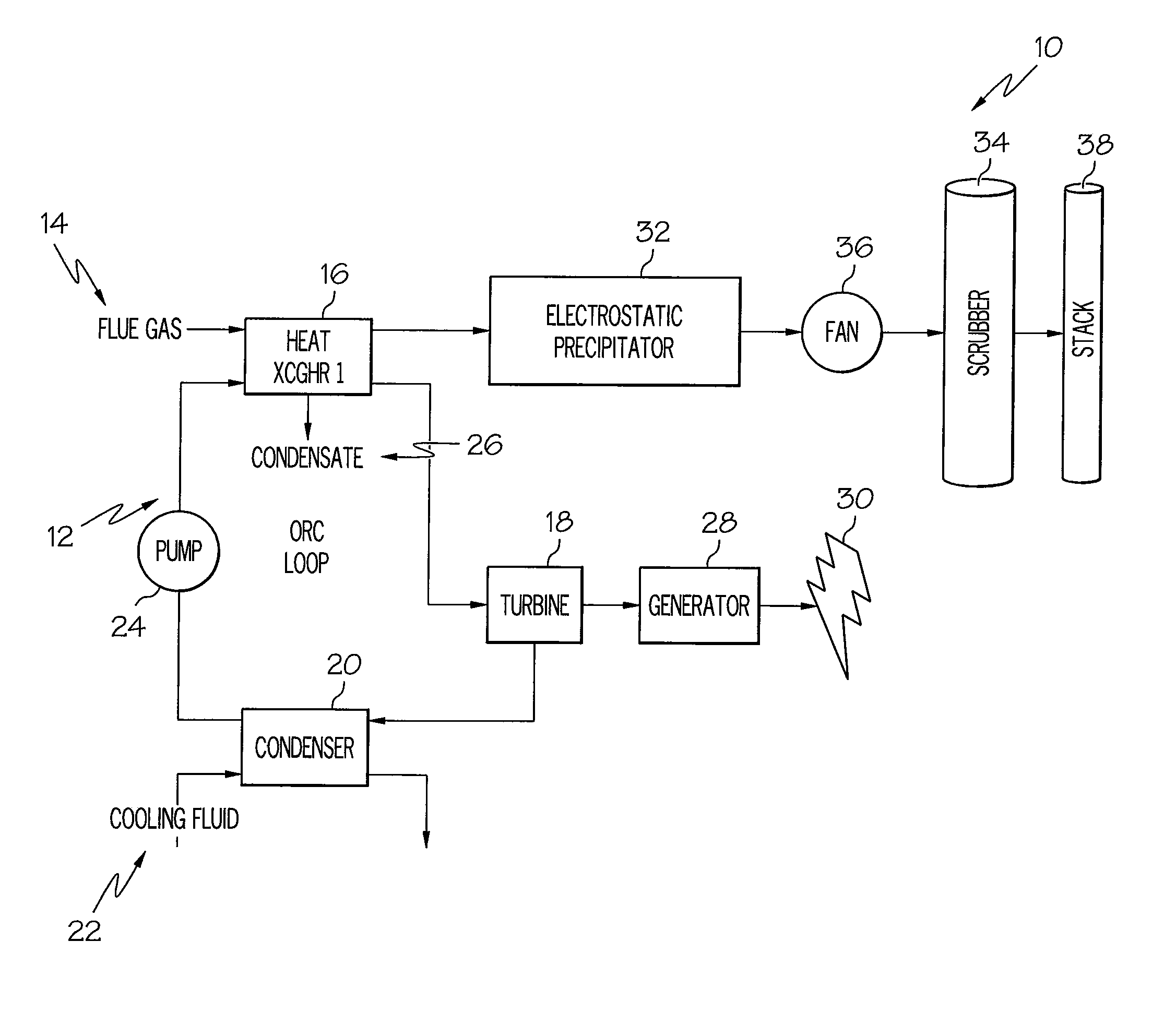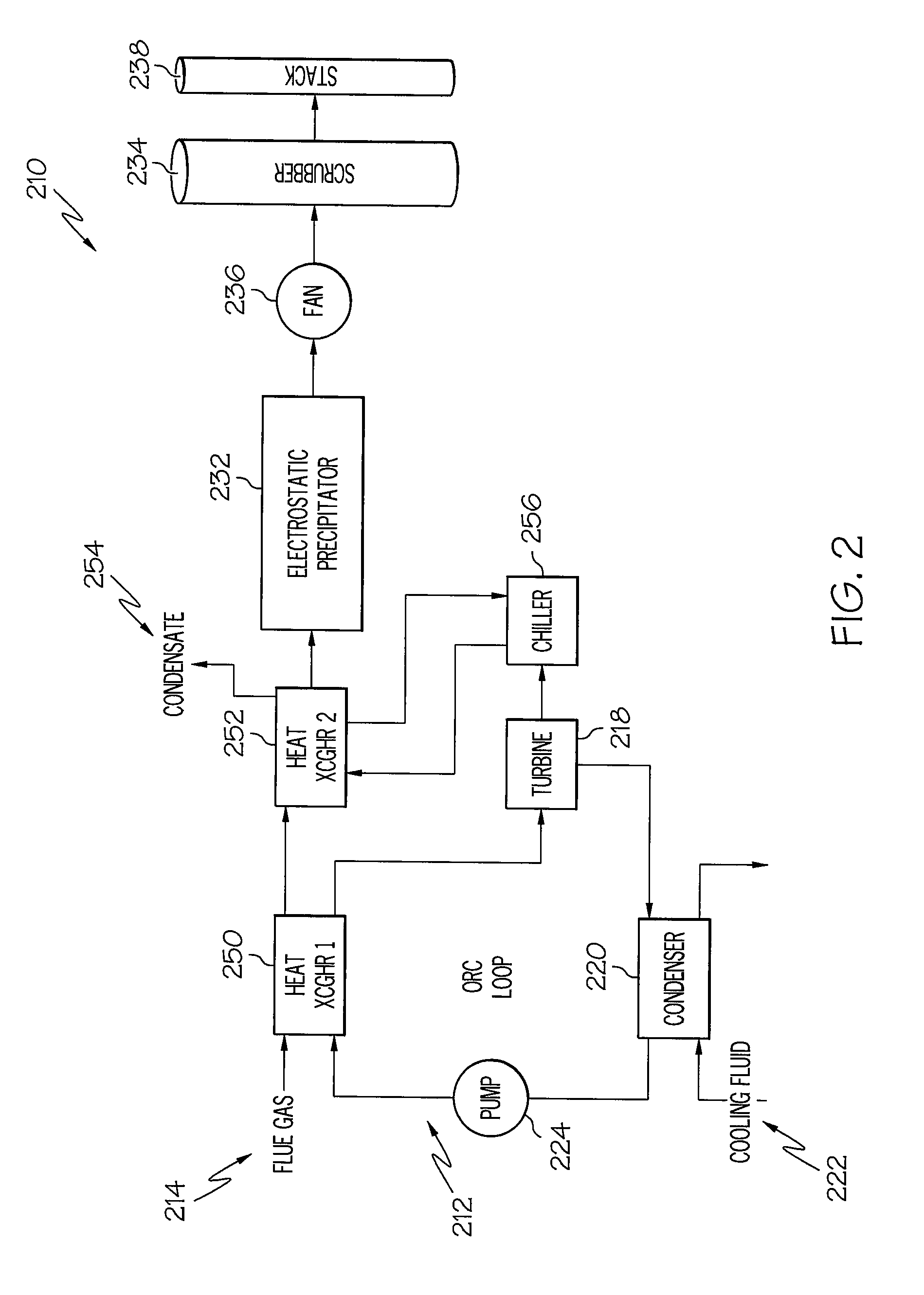Power plant emissions control using integrated organic rankine cycle
a technology of organic rankine cycle and power plant, which is applied in the direction of greenhouse gas reduction, separation processes, lighting and heating apparatus, etc. it can solve the problems of reducing the temperature of the flue gas, wasting heat energy in the hot flue gas, and reducing the efficiency of scrubbers in removing acid gasses from combustion products, so as to reduce the concentration of pollutants , the effect of reducing the concentration of pollutants
- Summary
- Abstract
- Description
- Claims
- Application Information
AI Technical Summary
Benefits of technology
Problems solved by technology
Method used
Image
Examples
Embodiment Construction
[0017]Example embodiments that incorporate one or more aspects of the invention are described and illustrated in the drawings. These illustrated examples are not intended to be a limitation on the invention. For example, one or more aspects of the invention can be utilized in other embodiments and even other types of devices. Moreover, certain terminology is used herein for convenience only and is not to be taken as a limitation on the invention. Still further, in the drawings, the same reference numerals are employed for designating the same elements.
[0018]Systems and methods for condensing acids and vaporous hazardous air pollutants in an energy efficient manner are described herein. In one example, an organic Rankine cycle (ORC) can be used to extract energy from low temperature gas streams to improve the efficiency and effectiveness of the pollution reduction process.
[0019]Turning to the shown example of FIG. 1, an example system 10 for the reduction of pollutants in the flue ga...
PUM
| Property | Measurement | Unit |
|---|---|---|
| temperature | aaaaa | aaaaa |
| temperature | aaaaa | aaaaa |
| temperature | aaaaa | aaaaa |
Abstract
Description
Claims
Application Information
 Login to View More
Login to View More - R&D
- Intellectual Property
- Life Sciences
- Materials
- Tech Scout
- Unparalleled Data Quality
- Higher Quality Content
- 60% Fewer Hallucinations
Browse by: Latest US Patents, China's latest patents, Technical Efficacy Thesaurus, Application Domain, Technology Topic, Popular Technical Reports.
© 2025 PatSnap. All rights reserved.Legal|Privacy policy|Modern Slavery Act Transparency Statement|Sitemap|About US| Contact US: help@patsnap.com



